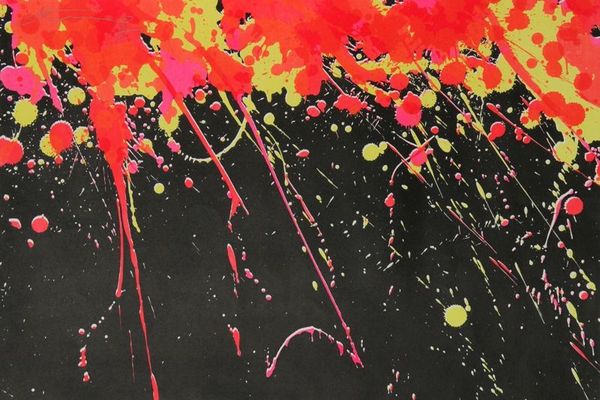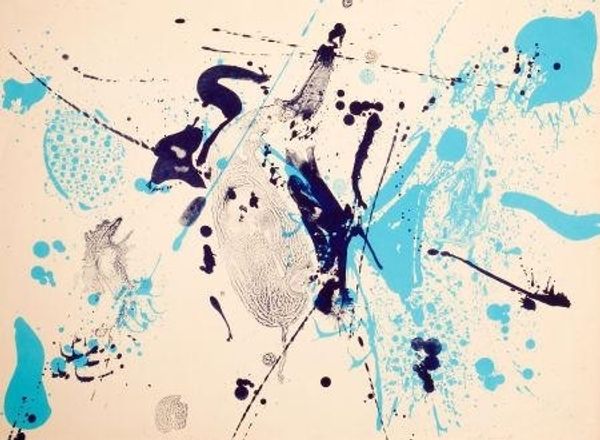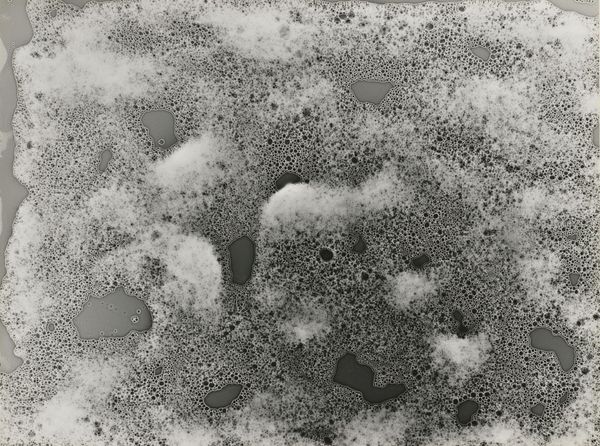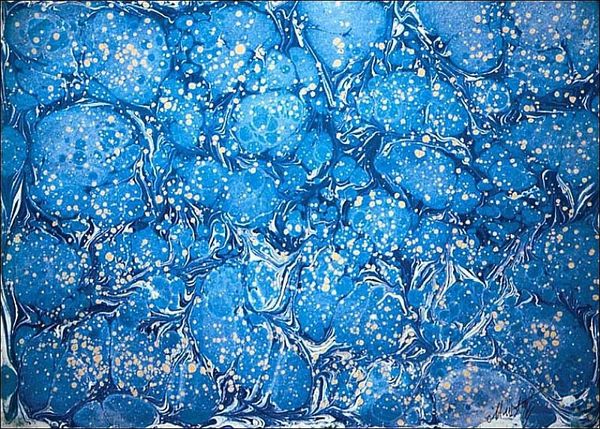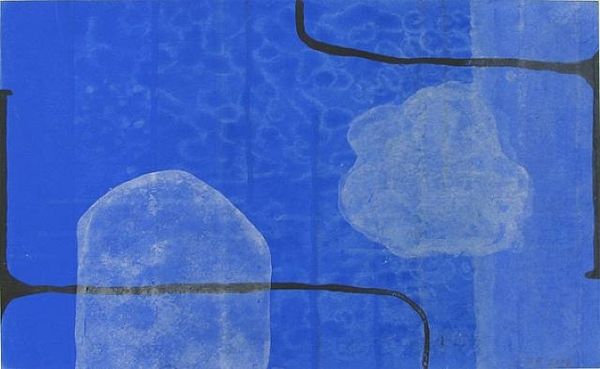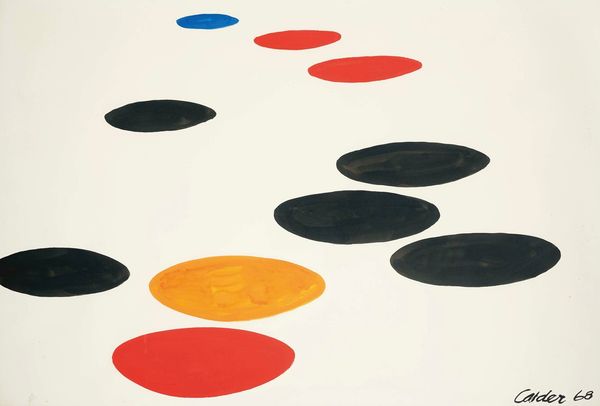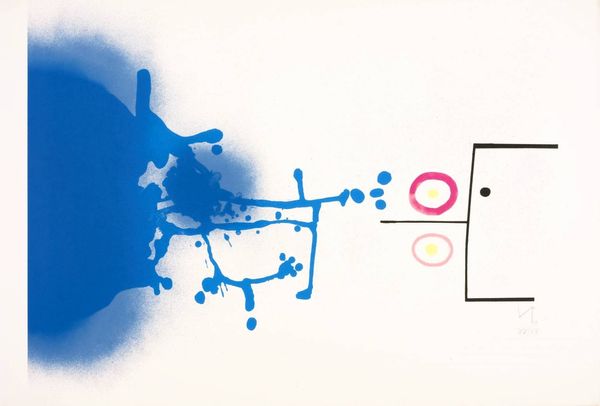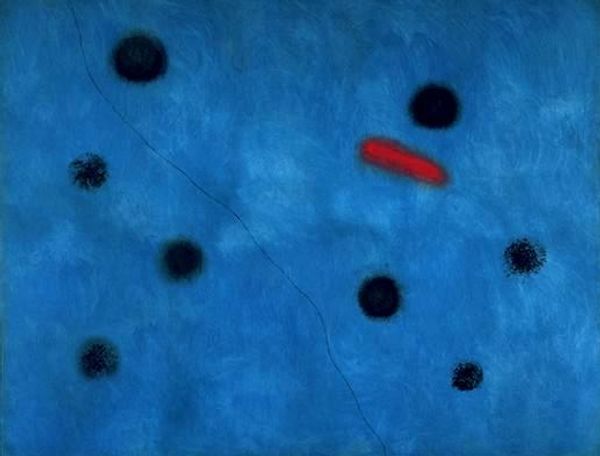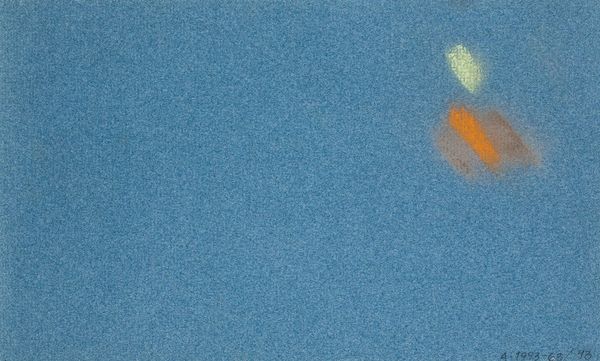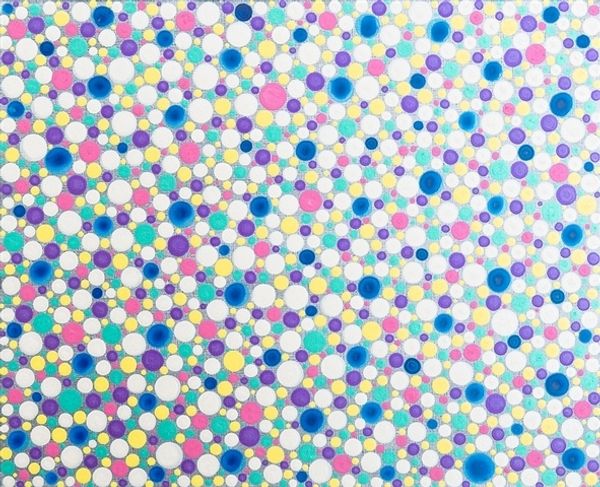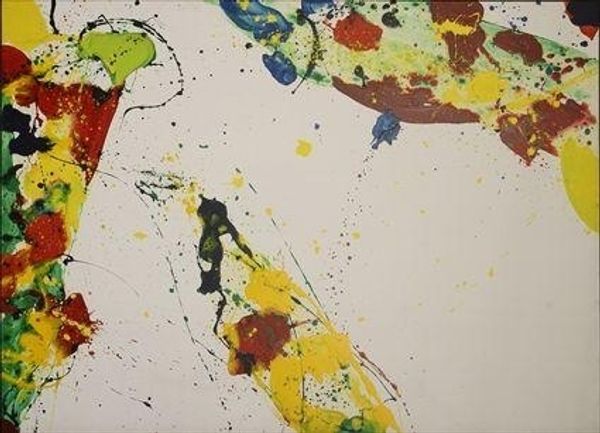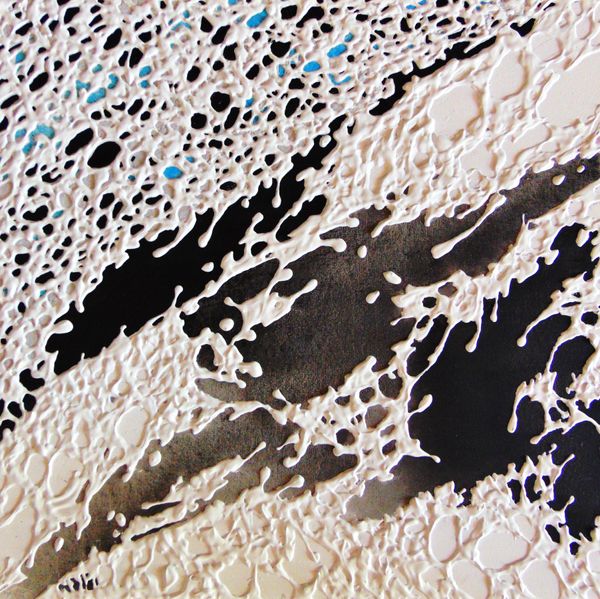
#
natural stone pattern
#
abstract expressionism
#
naturalistic pattern
#
geometric pattern
#
abstract pattern
#
organic pattern
#
flower pattern
#
layered pattern
#
pattern in nature
#
organic texture
Copyright: Gabriella Possum Nungurrayi,Fair Use
Editor: Here we have Gabriella Possum Nungurrayi’s "Seven Sisters," painted in 2005. The blues and whites give the piece a striking quality. It’s like looking at a satellite image of branching rivers or neural networks, yet punctuated by these concentrated golden sun-like forms. How would you interpret this work? Curator: Well, let's think about this painting within the context of contemporary Indigenous art. The layering and intricate patterns immediately speak to the importance of story-telling and connection to the land, integral parts of Indigenous cultures. Those 'golden suns,' as you described them, are indeed representative of the Seven Sisters constellation in Aboriginal cosmology. This is often linked to creation stories, and the themes of pursuit and protection. Editor: So, it's not just a visual representation but a narrative? Does the painting become a form of cultural preservation? Curator: Absolutely. These works become incredibly important in contexts where Indigenous cultures were historically suppressed. They are visual assertions of identity, claiming space within art institutions, telling previously untold histories and experiences. Do you see how the artist employs a mix of traditional motifs while also utilizing contemporary materials, which gives the work an entry point into modern discussions about Indigeneity and representation? Editor: I do. Seeing it that way shifts my understanding completely. It becomes more than just abstract art. It becomes a powerful statement. The 'pattern in nature' as the tags point out aren’t just patterns – they are loaded with cultural meaning and resisting colonial erasures. Curator: Precisely. By bringing that lens to our viewing, the aesthetic experience opens into a much deeper understanding of art's public role and its potential for socio-political impact. I think I learned to appreciate the agency that artists wield.
Comments
No comments
Be the first to comment and join the conversation on the ultimate creative platform.
